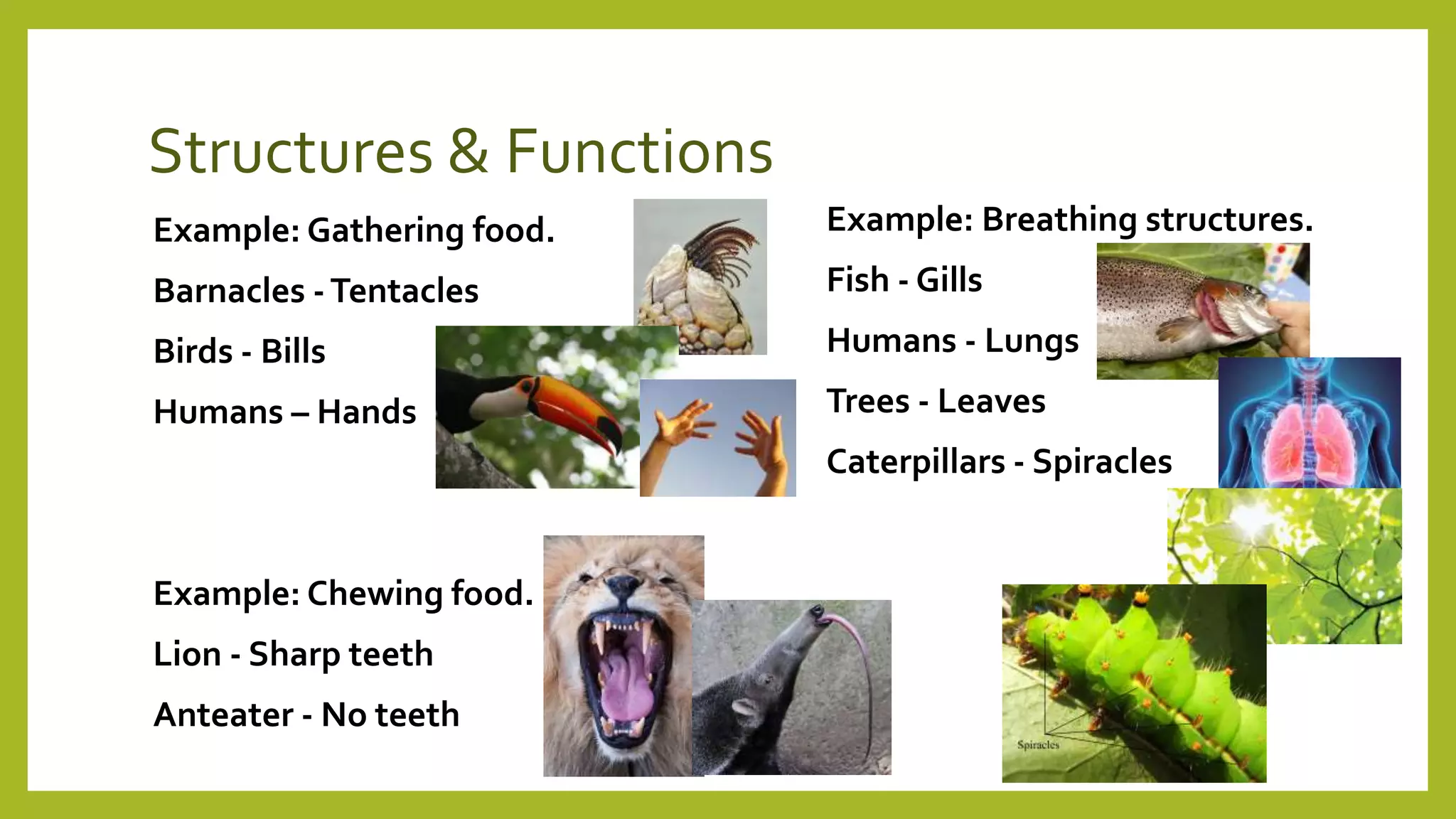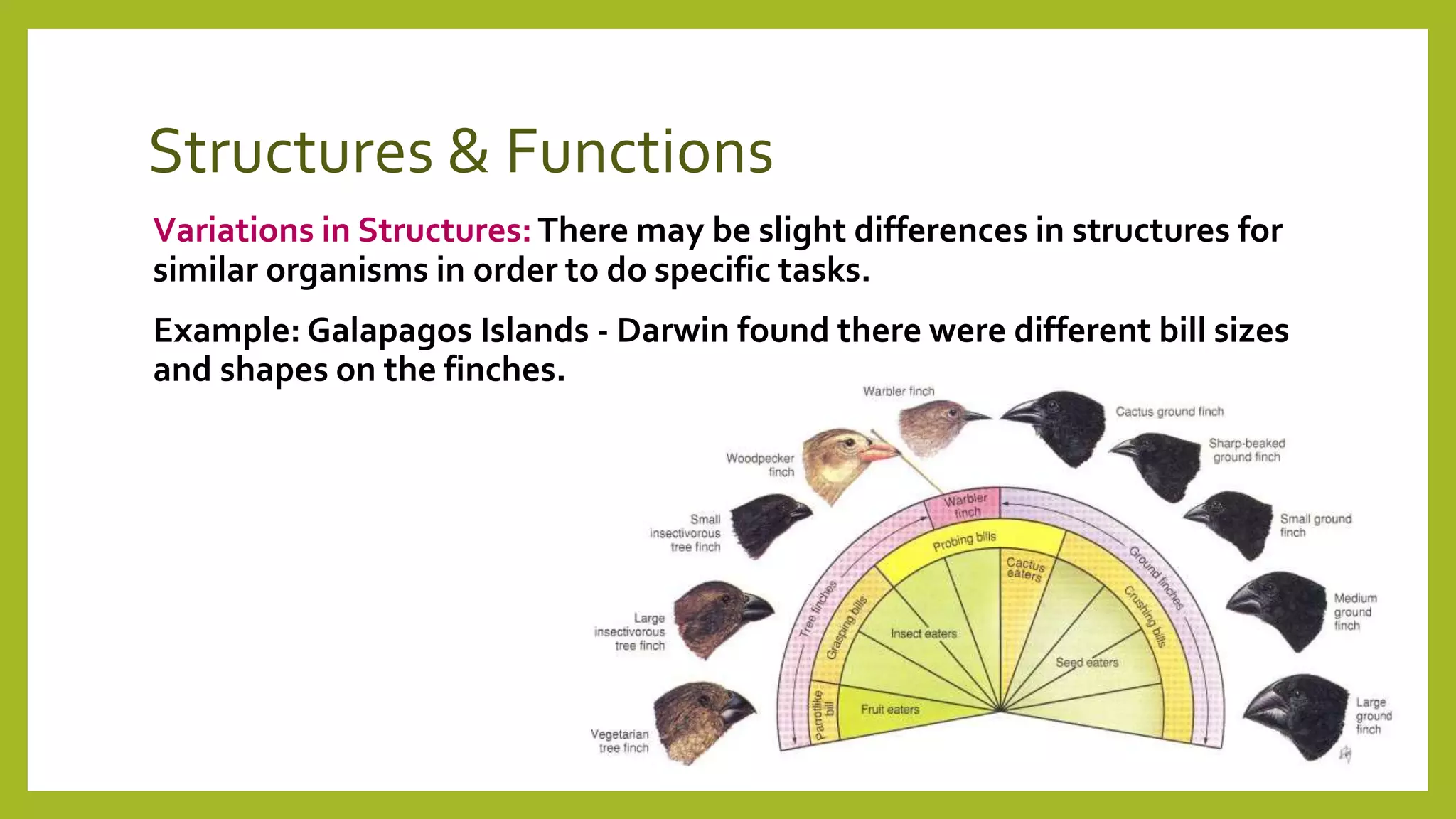Embed presentation
Download to read offline





Structures are body parts that perform specific tasks, while functions are the processes organisms need to live. Though many organisms perform the same functions, they may have different structures to do so - humans use legs for movement while gibbons use arms. Examples of variations in structures for functions like gathering food, chewing food, and breathing across different organisms like humans, barnacles, birds, lions, and trees are provided. A list of common functions for living things is also included, with the document concluding that similar organisms may have slight structural differences to perform specific tasks.




